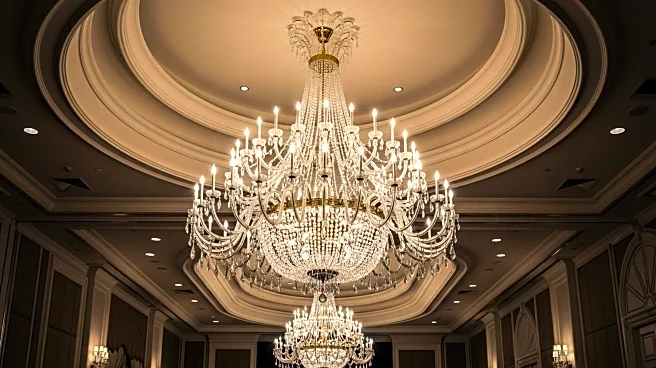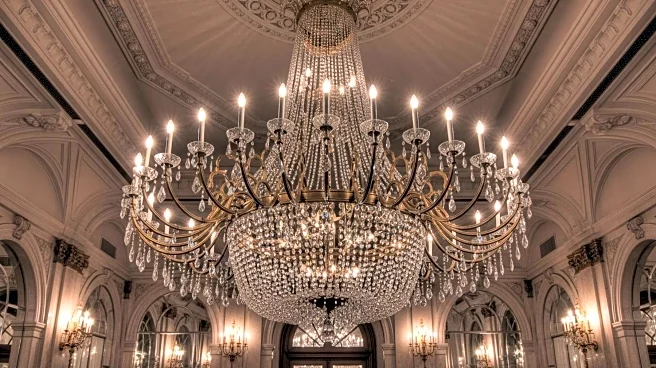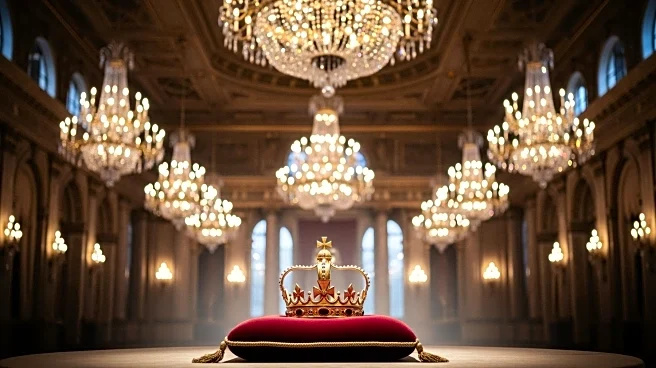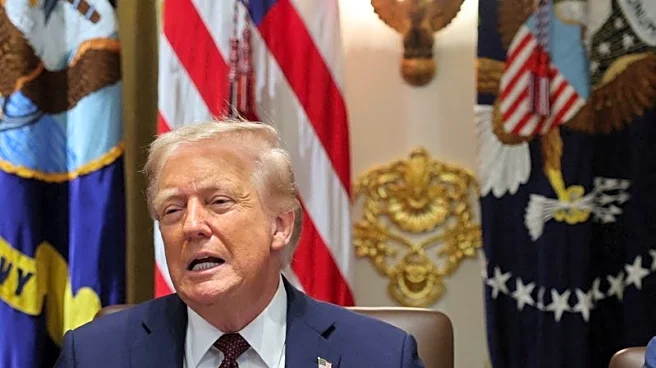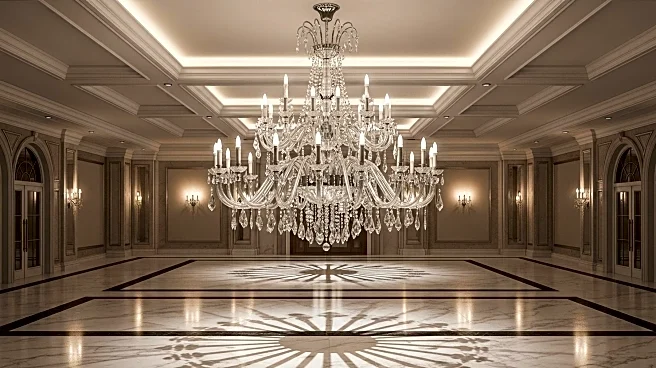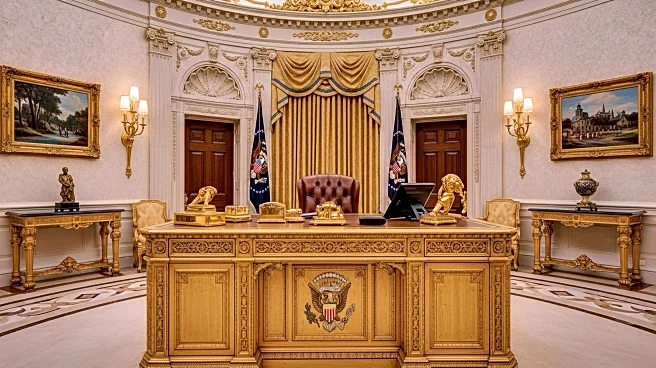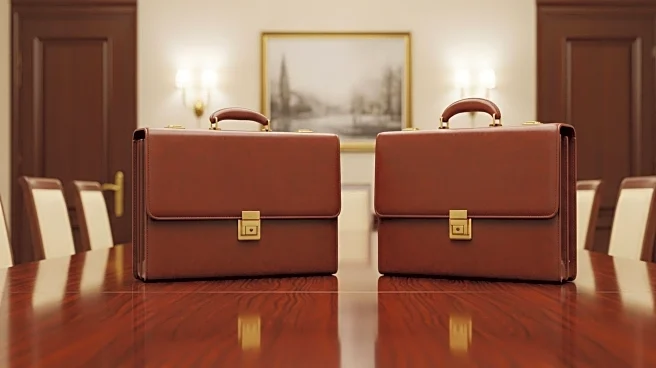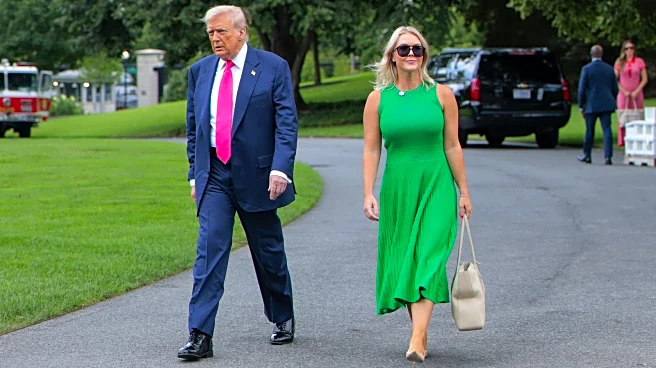What's Happening?
Senator John Fetterman (D-Pa.) has addressed concerns regarding President Trump's plans to construct a new $200 million ballroom in the White House. The project involves tearing down the East Wing to build a 90,000-square-foot ballroom designed to host large social events, seating up to 650 people. The White House press secretary, Karoline Leavitt, stated that the project will be financed by Trump and donors, with renovations starting in September. The construction is expected to be completed before Trump leaves office, although White House tours have been paused, indicating that work may have already begun. Fetterman expressed that the upgrades are normal and should be done in a tasteful manner, dismissing the need for any hearings or strong opposition.
Why It's Important?
The construction of a new ballroom in the White House signifies a substantial investment in the infrastructure of the presidential residence. This development could impact how social events are hosted at the White House, potentially increasing its capacity to accommodate larger gatherings. The financing of the project by President Trump and donors raises questions about the influence of private funding on public property. Additionally, the renovations reflect ongoing changes to the White House under Trump's administration, which may affect public perception and historical preservation efforts.
What's Next?
Renovations are set to begin in September, with the goal of completing the project before President Trump leaves office. The pause in White House tours suggests that construction activities may already be underway. Stakeholders, including political leaders and preservationists, may continue to monitor the project's progress and its implications for the White House's historical integrity. Public reactions and potential political debates could arise as the project moves forward.
Beyond the Headlines
The decision to build a new ballroom in the White House touches on broader themes of historical preservation versus modernization. It raises ethical questions about the use of private funds for public property enhancements and the potential influence of donors on presidential decisions. The project may also reflect cultural shifts in how presidential residences are utilized for social and political purposes.
